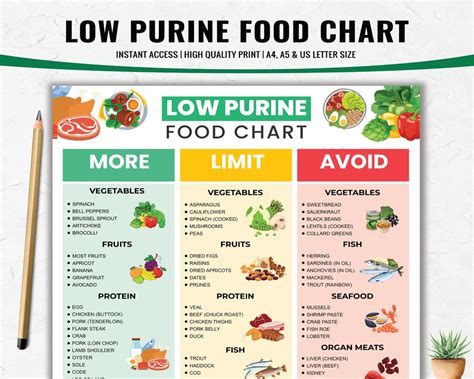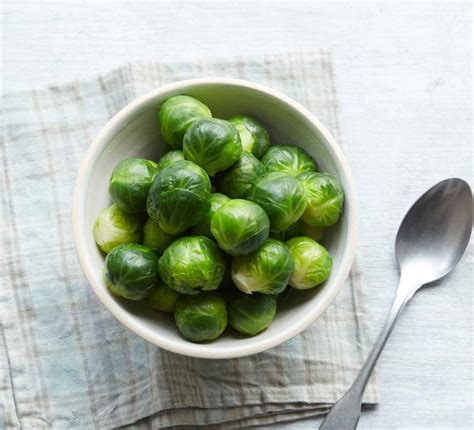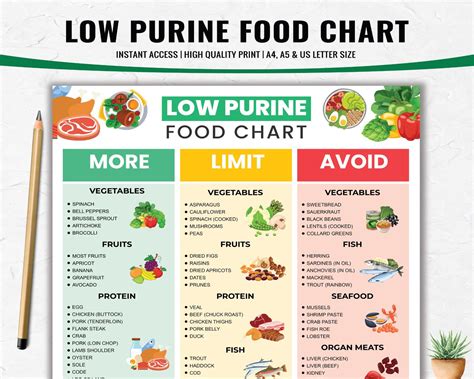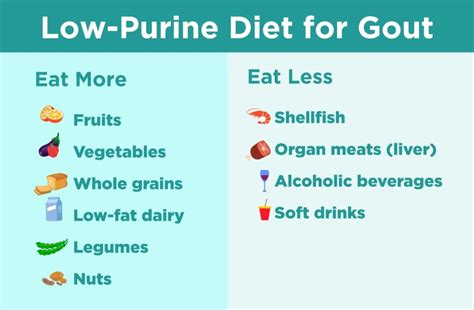Intro
Manage gout with 5 low purine tips, reducing uric acid levels through dietary changes and lifestyle adjustments, including purine-rich food avoidance and natural remedies.
Managing purine intake is crucial for individuals dealing with gout or those at risk of developing kidney stones. A low purine diet helps reduce the amount of uric acid in the body, which can alleviate symptoms and prevent future episodes. Understanding the importance of purine management can significantly improve the quality of life for those affected. It's essential to delve into the specifics of what purines are, how they affect the body, and most importantly, how to manage them through dietary adjustments.
Purines are naturally occurring substances found in the body and in certain foods. When purines break down, they form uric acid, which is typically excreted through the urine. However, an excessive intake of purine-rich foods can lead to elevated uric acid levels, causing discomfort and health issues. The key to maintaining a healthy balance is to be aware of the purine content in common foods and beverages, allowing for informed choices that support overall well-being.
Adopting a low purine diet requires a comprehensive understanding of which foods are safe to consume and which should be limited or avoided. It's not just about cutting out certain foods but also about incorporating a variety of low-purine options to ensure a balanced and nutritious diet. This approach not only helps in managing gout and kidney stone risk but also promotes a healthier lifestyle. By focusing on whole, unprocessed foods and being mindful of portion sizes, individuals can effectively reduce their purine intake.
Understanding Purines and Their Impact

To effectively manage purine intake, it's vital to understand how different foods affect uric acid levels. Purine-rich foods can be categorized into high, moderate, and low purine content. High purine foods, such as organ meats and certain seafood, should be consumed sparingly, while low purine foods like most vegetables, fruits, and whole grains can be enjoyed more freely. Moderation is key, even with low purine foods, as excessive consumption can still contribute to elevated uric acid levels.
Identifying High Purine Foods
High purine foods include organ meats like liver and kidneys, certain types of fish and seafood such as anchovies and sardines, and some alcoholic beverages, particularly beer. These foods should be limited or avoided in a low purine diet. It's also important to note that while some foods may not be naturally high in purines, they can still contribute to increased uric acid production due to other factors, such as sugar content or the body's response to certain ingredients.Benefits of a Low Purine Diet

Adopting a low purine diet offers several benefits, particularly for individuals with gout or at risk of kidney stones. By reducing the intake of purine-rich foods, individuals can lower their uric acid levels, which in turn can reduce the frequency and severity of gout attacks and decrease the risk of forming kidney stones. A low purine diet also encourages the consumption of a wide range of nutritious foods, promoting overall health and well-being.
Key Components of a Low Purine Diet
A well-planned low purine diet should include a variety of foods from all food groups, with an emphasis on whole, unprocessed foods. Vegetables, fruits, whole grains, lean proteins, and low-fat dairy products are all excellent choices. It's also crucial to stay hydrated by drinking plenty of water, as this helps the body to flush out uric acid more efficiently. Limiting or avoiding foods high in purines, sugar, and saturated fats is also essential.Practical Tips for Managing Purine Intake

Here are some practical tips to help manage purine intake:
- Keep a food diary: Tracking what you eat and how your body reacts can help identify which foods trigger gout attacks or increase uric acid levels.
- Choose low purine protein sources: Opt for chicken, turkey, and fish that are not high in purines, and limit intake of organ meats and seafood known to be high in purines.
- Incorporate plenty of fruits and vegetables: Most fruits and vegetables are low in purines and rich in nutrients, making them excellent choices for a low purine diet.
- Stay hydrated: Drinking enough water helps the kidneys function properly and can reduce the concentration of uric acid in the urine.
- Limit alcohol intake: Certain alcoholic beverages, especially beer, can increase uric acid production and should be consumed in moderation or avoided.
Sample Low Purine Meal Plan
A sample meal plan might include: - Breakfast: Oatmeal with fruit and a glass of water - Lunch: Grilled chicken with roasted vegetables and quinoa - Dinner: Baked fish with a side of steamed vegetables and whole grain rice - Snacks: Fresh fruits, carrot sticks with hummus, and low-fat yogurtChallenges and Considerations

While adopting a low purine diet can be beneficial, it also presents several challenges. One of the main difficulties is ensuring that the diet remains balanced and nutritious while limiting certain food groups. It's also important to consider the social and emotional aspects of dietary changes, as they can affect relationships and overall quality of life. Seeking support from healthcare providers, dietitians, and support groups can make the transition to a low purine diet smoother and more sustainable.
Navigating Social Situations
Navigating social situations while on a low purine diet can be challenging but manageable. It's helpful to plan ahead, research menus before dining out, and communicate dietary needs to hosts when attending social gatherings. Bringing a dish to share can also ensure that there are low purine options available.Conclusion and Future Directions

In conclusion, managing purine intake through dietary adjustments can significantly impact the management of gout and the risk of kidney stones. By understanding which foods are high and low in purines, individuals can make informed choices that support their health. It's crucial to approach dietary changes with a holistic perspective, considering not just the nutritional aspects but also the social and emotional impacts. As research continues to uncover the complexities of purine metabolism and its effects on the body, staying updated on the latest findings and recommendations will be essential for optimizing low purine diets.
Final Thoughts on Low Purine Diets
Embracing a low purine diet is a proactive step towards health management and prevention. It requires commitment, patience, and a willingness to learn and adapt. By focusing on whole, nutritious foods and being mindful of purine intake, individuals can take a significant step towards reducing their risk of gout and kidney stones, ultimately improving their overall health and well-being.What are purines and how do they affect the body?
+Purines are substances found in the body and in certain foods. When they break down, they form uric acid, which can lead to health issues like gout and kidney stones if levels become too high.
Which foods are high in purines and should be avoided?
+Foods high in purines include organ meats like liver and kidneys, certain seafood like anchovies and sardines, and some alcoholic beverages, particularly beer. These should be limited or avoided in a low purine diet.
How can I ensure I'm getting enough nutrients on a low purine diet?
+Focus on whole, unprocessed foods including a variety of vegetables, fruits, whole grains, lean proteins, and low-fat dairy products. Staying hydrated and considering professional dietary advice can also help ensure a balanced intake of nutrients.
We invite you to share your experiences with managing purine intake and any tips you might have for adopting a low purine diet. Your insights can help others navigate their health journeys more effectively. Additionally, if you found this information helpful, please consider sharing it with others who might benefit from understanding the importance of purine management. Together, we can support each other in making informed choices for our health and well-being.
